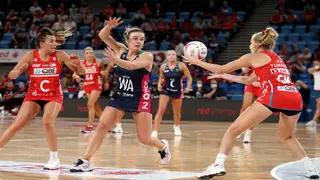Which are the most popular sports for girls? An informative list
Other Sports
If you are a soccer diehard, you are probably familiar with the rules and regulations that govern the sport. To ensure fair play in every match, referees ensure that each team does not get an unfair upper hand over the other. For that reason, several cards are often issued to players as a form of punishment. However, there is one particular card, the green card, which is not a form of punishment.

Soccer has become one of the most televised sports in the world. It has become a world sport, with millions of fans often anticipating various matches. The yellow one is a warning, while the red one is an expulsion from the game. From this article, you will learn about the following topics and more:
Which are the most popular sports for girls? An informative list
Other Sports
A green card in soccer rewards players who exhibit exemplary sportsmanship while also serving as a disciplinary measure against those who lack respect or dissent against match officials. Though not a part of the traditional system, it has been used sparingly throughout history.
While it is still being determined why it is utilised, and there is no universal interpretation of what it means, different leagues may have their understanding of the green card and its usage. Therefore, not all referees issue them positively.
The initial purpose was to serve as a reward for fair play in various football matches, whereby different soccer players who have consistently exhibited impressive actions get it. The idea came about in 1986 by a Colombian referee, Roosevelt Bohorquez, who claimed that he thought about the traffic lights, red, green, and yellow.
What is the easiest sport to play right now and why is it the easiest?
Other Sports

Roosevelt Bohorquez was such an optimistic person who claimed that if the yellow and red cards were used as disciplinary measures, there must be a green to cater to the other side of the coin. Consequently, that same year, it was set up for discussion.
In the Irish FA, the green card system is also exercised in some youth competitions, where they come up with a set of rules that players ought to follow to qualify for it.
What is netball? What are the rules and regulations of the sport?
Other Sports
These cards have generally been used as symbolic gestures in the past and not as a specific response to irresponsible actions that could cause injury during a match. There are two reasons why a referee would issue it to a particular player.
Football has a well-documented history of being swift to punish athletes for negative on-field actions. However, what about acknowledging the impressive actions on the field? But even though the idea seemed bright, its uptake hit an almost immediate standstill, as it never really received expected levels of popularity beyond experimental fixtures.

It was used not only for reward purposes but also as a disciplinary measure. In this case, players who failed to respect referees were often issued. In other words, it functioned like a yellow card would, where the offending player was cautioned due to failure to show courtesy to the match officiators.
What is pickleball and how do you play it? Rules and regulations of the game
Other Sports
The only difference they have is the fact that, unlike the yellow, where the offending player is cautioned and still given a chance to continue with the match when the green is issued, the player is sent out of the pitch.
Soccer is such an intriguing and most-followed sport globally, and most fans live for it. But did you know there are other cards besides the usual yellows and reds? Read on to find more information about this sport.
A foul is an infraction committed by a player and signalled by one of the officials on the pitch. Some of the most common fouls include;

It is issued to players who have committed any form of a foul. Typically, they are given once as a caution, but when the player commits another foul, he is given a second one, which is equivalent to the red.
Indoor sports: A list of the best indoor sports and games in the world
Other Sports
This is a player or a coach's most severe punishment in soccer. It is issued in two forms, whereby it can be a second yellow after a warning or a severe foul, which results in being issued on the sport. For instance, if a player injures another player or consistently commits fouls.
Depending on the league of that season, they result in athletes and even coaches being suspended from future matches.
Surprisingly, there is a blue card in soccer, which is issued following misconduct in indoor soccer and is considered a level lower than the yellow one.
Green cards are more like two opposite sides of a coin because they can be used to reward fair and sportsmanlike play and to caution offending players who lack respect toward match officials. However, some of the game's most prominent bodies, like FIFA and UEFA, do not recognise the green card nor allow referees to use it within their competitions.
Ranked! Top 10 best indoor basketballs to hoop with right now
NBA
READ ALSO: Top 10 players with the highest salaries in Ligue 1
Sports Brief published an article listing the top earners in the Ligue 1 as of 2023. Ligue 1 Uber Eats is among the most prominent European leagues and has attracted some of the best talent in the sport. Who are some of the highest-paid athletes?
PSG's Kylian Mbappe is the highest-paid Ligue 1 athlete (As of 2024), earning approximately €72,000,000 annually. Marquinhos, also of PSG, comes in second, with a yearly pay of €323,077 weekly. Check out the article above for the list of Ligue 1's top earners.